Asters
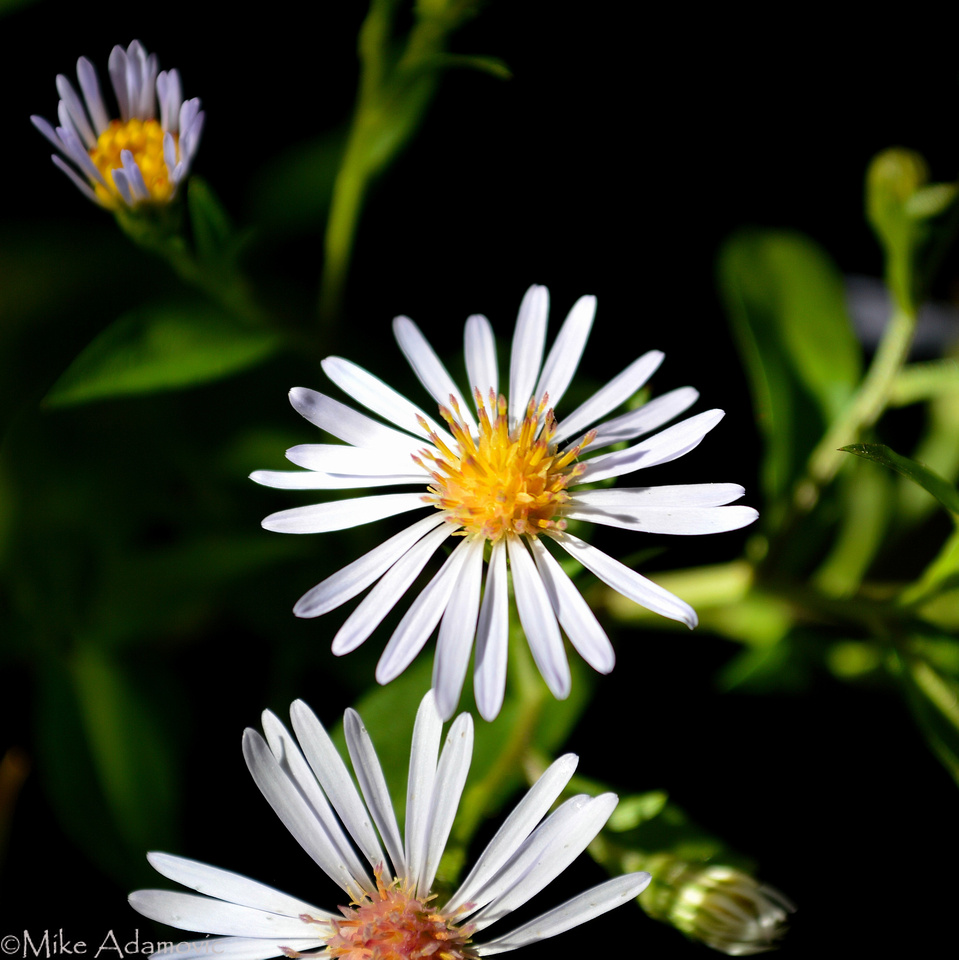

The end of summer is often marked by decline—trees lose their youthful and lively green, leaves plummet like rain similarly to the temperature, and sensitive vegetation begins to wither. But there's more to the early fall season than just decay and loss. It should rather be marked by the burgeoning color that expands across the landscape—not in relation to the autumnal leaves—but rather of late blooming wildflowers. Starting in August and lasting until the late days of October or even early November, asters and goldenrods enliven the fields and forests with bursts of floral grandeur. The asters in particular are the stars of the season, quite literally.
In Latin, aster directly translates to star. It's a fitting description for a plant that possesses innumerable tiny blossoms, which are often white, and when seen growing together in a meadow or roadside are usually in such profusion that one cannot help but admire their uncanny resemblance to the overhead fixtures of the night sky. The naturalist Henry David Thoreau was impressed enough with their brilliance to poetically describe them as "a starry meteoric shower, a milky way, in the flowery kingdom." Even he admitted that just when "you thought that nature had about wound up her affairs... now, to your surprise, these ditches are crowded with millions of little stars." Asters are especially resistant to cold, and will continue to bloom until a severe frost or snow stymies their vigorous growth.
In North America there are approximately 150 distinct species of aster, many of which superficially look nearly identical to one another. To add to this dizzying array of form, species often interbreed, forming countless hybrids. All of this together can make a positive identification incredibly difficult even to botany experts. Despite the complexity, these flowers are perfect for studying the intricacies of evolution. As an authoritative aster expert put it "the very quality which makes the genus so vexatious to the searcher after quick and certain definitions of species, makes it full of keenest interest to the student of variation. Variation... reaches a maximum development in Aster."
While asters are most often viewed in open areas such as fields and roadsides, due to the accessible nature of these areas to us, asters grow in every habitat imaginable, from the deep and shaded understory of hardwood forests to limestone cliffs and even in mucky salt water marshes that are regularly submerged by tides. Plants are adapted to the unique set of conditions of their habitat. In open, sunny expanses, species often have thin, sometimes needle-like leaves, such as stiff (Ionactis linariifolia) and bushy (Symphyotrichum dumosum) asters. A leaf shape such as this helps reduce evaporative stress to plants constantly subjected to the desiccating force of direct sunlight. The white wood aster (Eurybia divaricata), by contrast, which thrives amidst shady forest floors possesses long, broad leaves that ensure even the most minimal spattering of sunlight that makes it to the understory is put to use.
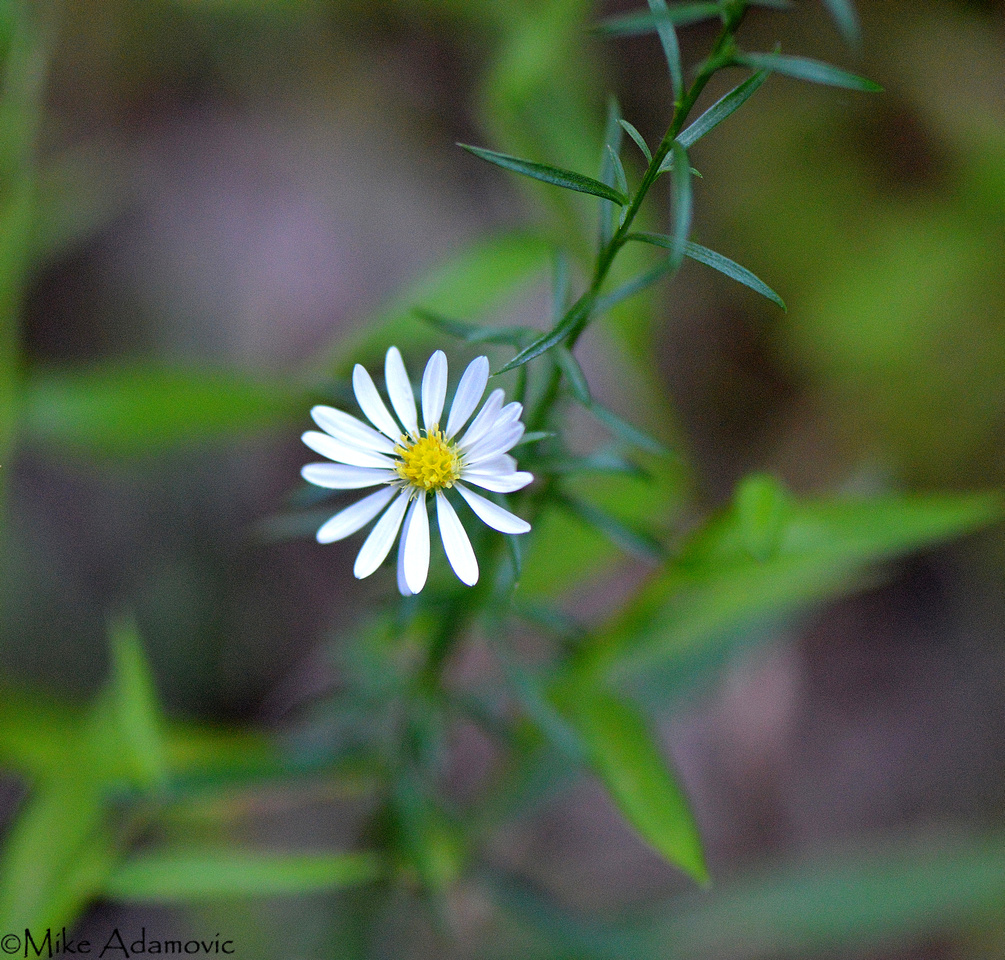
 Bushy Aster (Symphyotrichum dumosum)
Bushy Aster (Symphyotrichum dumosum)
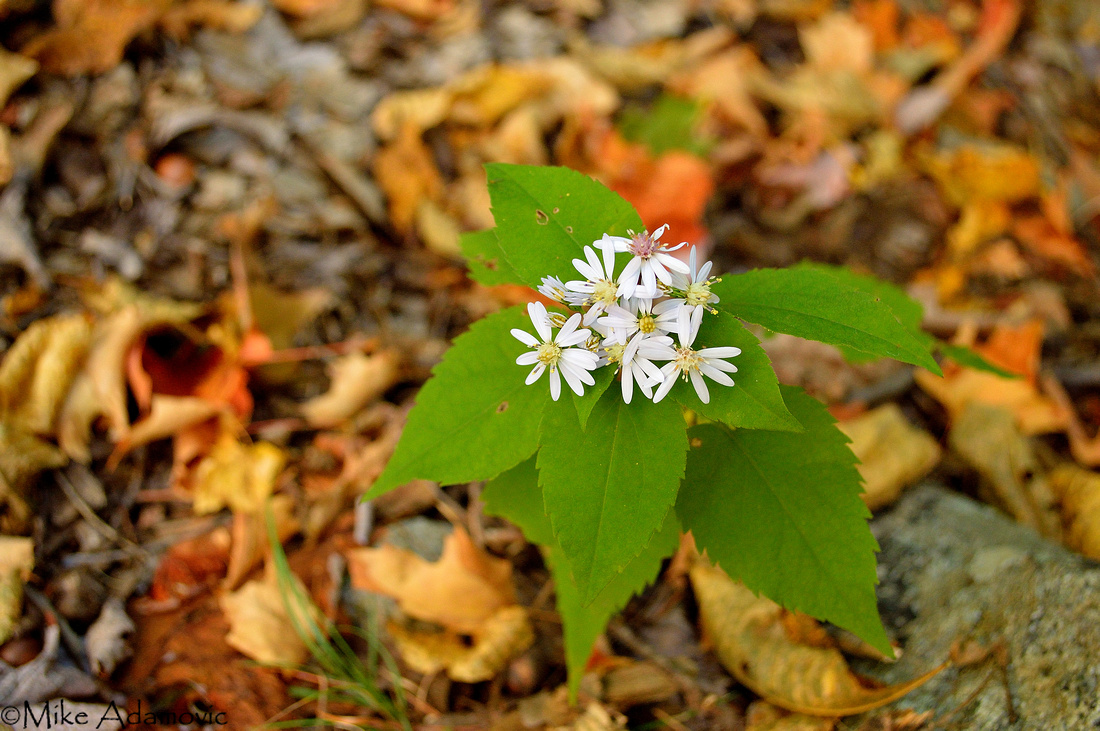
 White Wood Aster (Eurybia divaricata)
White Wood Aster (Eurybia divaricata)
Asters belong to the Composite family, a hugely successful and expansive group of plants that consists of around 24,000 species worldwide. In terms of flowering plants, only the Orchidae, or orchid family, rivals it in quantity of species. Sunflowers, coneflowers, and daisies are also composites. This family is special in the fact that each flowerhead is composed of numerous smaller flowers called florets, which bunched together form a single entity normally regarded as the "flower." Additionally, the asters have evolved an ingenious arrangement of the male and female florets to maximize cross-pollination. Female florets are located on the outer portions of the flower, while the pollen-bearing males are sequestered near the center. Pollinating insects have a tendency to first land on the edge of a flower and work their way inward before moving onto another blossom. In this way, pollen picked up at the middle one plant will be transferred to the edge of a different blossom, therefore ensuring genetic diversity. Another unique mechanism these plants possess is their ability to direct insects to unfertilized flowers. Newly opened flowers have yellow florets, but quickly morph to a reddish brown after pollination. This color change ensures insects don't waste time and deposit pollen on flowers that are already in the process of developing seeds.

 Calico Aster (Symphyotrichum lateriflorum)
Calico Aster (Symphyotrichum lateriflorum)
When it comes to petal color, there is, not surprisingly, also considerable variation that goes way beyond ghostly shades of white. One of the most magnificent aster species is the New England aster (Symphyotrichum novae-angliae), which, with its amethyst hued petals surrounding a bright golden floret-filled center could scarcely be improved upon. "No plant is more lavish of its charms than the New England Aster," wrote Charles Raddin, a turn of the 20th Century essayist. While the name may portray this species to be a denizen of the Northeast, it's exceedingly more cosmopolitan, ranging all along the east coast westward to the Mississippi and beyond. The name allegedly is derived from the fact that early New England colonizers found it particularly appealing. Raddin writes that "on many occasions, books handed down from revolutionary days, have been found to contain dried specimens of the flowers." The craze supposedly began by John and Priscilla Alden, a prominent Massachusetts couple who arrived to the country via the Mayflower and were the first to make it their "chosen flower." Centuries later, in the 1940's, a consensus of American naturalists agreed that the New England aster was indeed a flower to use as a hallmark, voting it the 3rd most beautiful wildflower in the country.


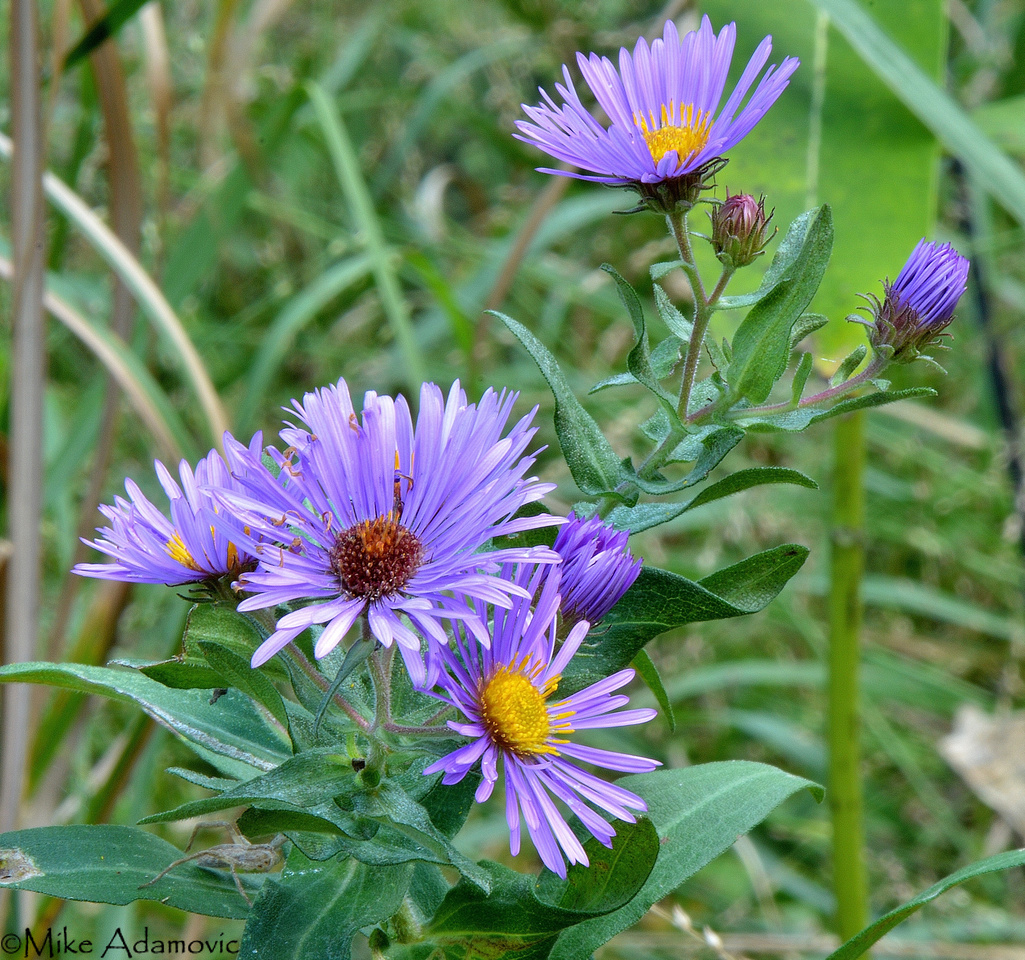
 New England Aster (Symphyotrichum novae-angliae)
New England Aster (Symphyotrichum novae-angliae)
Other asters are endowed with pastel purples, bluish, almost ultraviolet tints, or garner the occasional pink blossom. The color scheme is even greater in the many cultivated varieties that are now commonplace gracing businesses and home gardens. There are hundreds of cultivars from our native stock, most originating from the showiest of the bunch—New England and New York (Symphyotrichum novi-belgii) asters. Many of these cultivars still retain essences of their wildness, but possess traits that have been artificially exaggerated. Chrysanthemums, or "mums" for short, belong to the aster family and show the greatest level of alteration from centuries of cultivation, and are hence more "refined." These popular fall flowers originate from Europe and Asia. Compared to American asters and their cultivars, mums often offer few rewards to bees and other insects, having been meticulously honed to produce ornate aggregations of petals and little else. A healthy autumn garden would do well to be populated with a selection of natives that produce abundant quantities of pollen and nectar for beneficial pollinators.
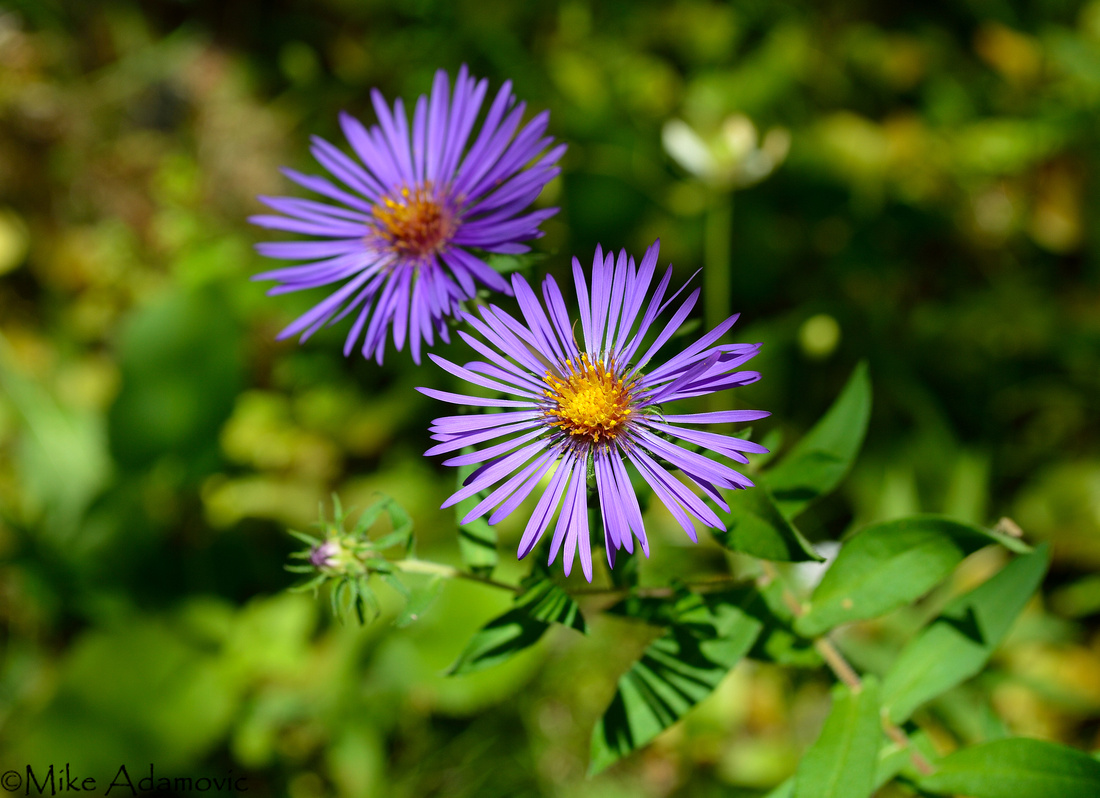
 New York Aster (Symphyotrichum novi-belgii)
New York Aster (Symphyotrichum novi-belgii)
A majority of asters are perennials, so they will continue to reappear year after year. They spread by expansion of rhizomes, or roots, as well as by seeds. Native asters are prolific seed producers. Their tiny seeds are a late autumn food source for a variety of wildlife, most notably birds, which heavily rely on them for sustenance after other sources have been exhausted.
Over the years asters have gained much in the way of lore and superstition throughout all civilizations they dwell in. To the Greeks, asters were referred to as the "many-eyed," and were employed to adorn the altars of their gods. Burnt leaves were also reputed to have the power to drive away snakes. In Germany, the European capital of mystic philosophy, they were used in divination charms by the enamored to see if their love was likely to be reciprocated or not. And in North America, various Indian tribes would smoke dried aster roots as a method to attract game (the smoke purportedly mimicked animal scents or pheromones).
Additionally, plants were believed to possess certain medicinal qualities. The smoke of white heath aster (Symphyotrichum ericoides) was used by Mid-western tribes to revive the unconscious. A concoction of aster tea brewed from both leaves and flowers was also reputed to be efficacious in eliminating headaches, fevers, congestion, and a variety of other ailments. The list of possible uses goes on and on. In essence, asters were a panacea, or cure-all.
A belief that asters could be utilized to combat illness was not confined to Native Americans. An 1839 edition of the New England Journal of Medicine printed a letter that detailed several instances of (not surprisingly) New England asters curing the supposedly incurable. It was reported effective in treating particularly debilitating cases of eczema by use of "a strong decoction of the herb," used not only in washing the affected area, but ingesting it as well. As the author states, "a tea made from barley malt, sarsaparilla and this aster (the tops and flowers), and so bittered with fumitory as to resemble beer in some measure, I consider a useful drink while curing eruptive disorders." Kidney ailments were similarly treated.
Be it their physical beauty in color, shape, and form, or by their utility in numerous tasks ranging from medicine to magical divination, the ubiquitous asters which span the globe in their 250 varieties, are truly a gift for all humanity. The ancient Greeks believed the flowers arose from Astraea, goddess of innocence and purity. After the gods had left earth once humanity had entered a dark and sinful period, she alone remained, endeavoring to restore peace and order. But, eventually, she also retreated, making her home among the stars where she became known as the constellation Virgo. After a vengeful Zeus had exacted a terrible retribution on the people of earth by issuing an epic flood, Astraea returned and visited the summit of Mount Parnassus, the one spot that had been untouched by the floodwaters, and sowed the seeds of a new type of plant that reflected her mission of purity. These flowers took the name of Aster. And so that all the races of men might be reminded of her ideals, Zephyrus, god of the west wind, scattered the seeds to every corner of the earth.
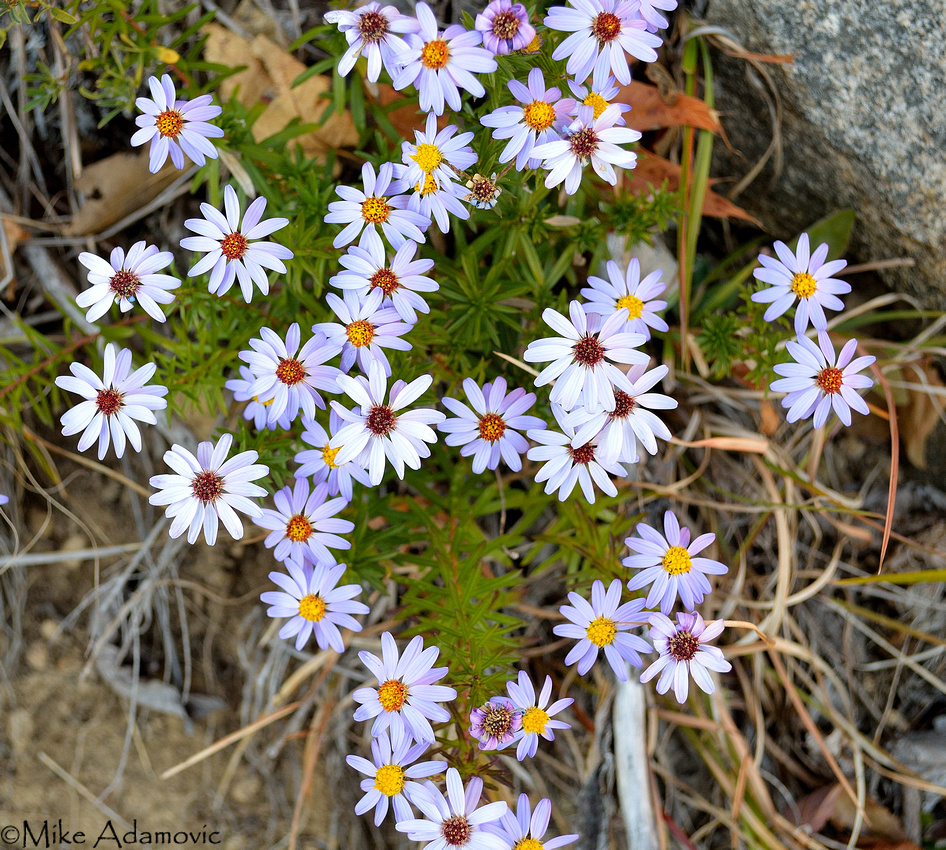
 Stiff Aster (Ionactis linariifolia)
Stiff Aster (Ionactis linariifolia)